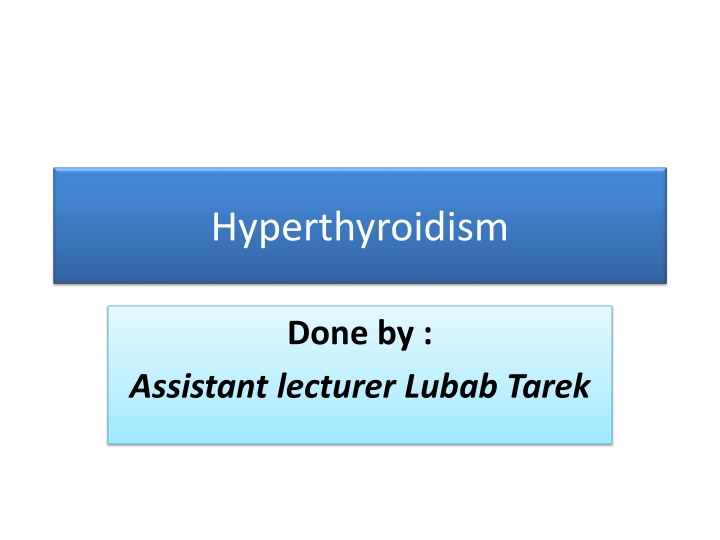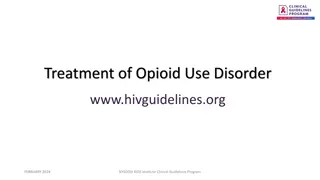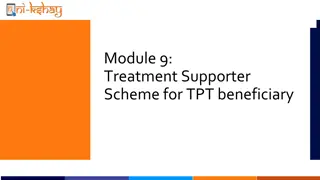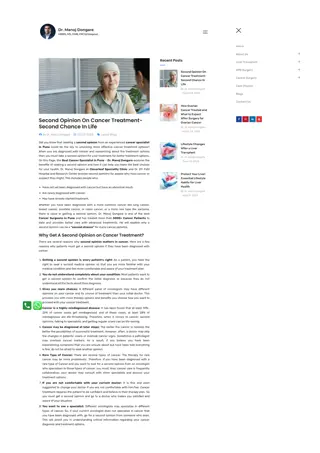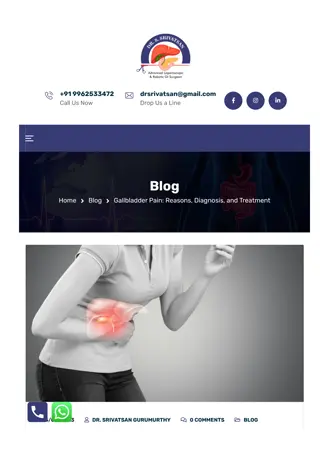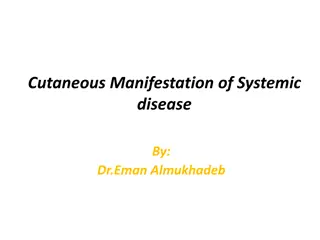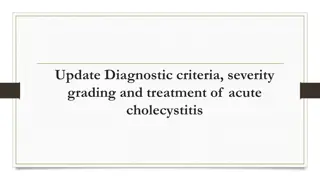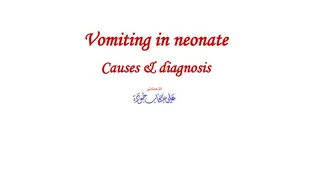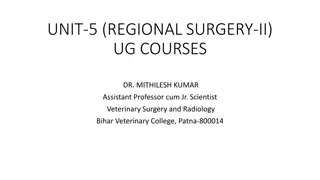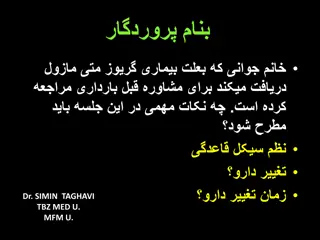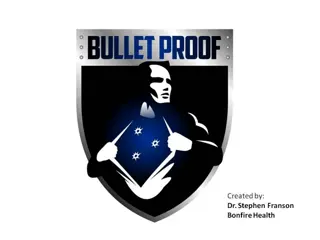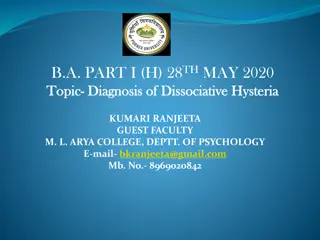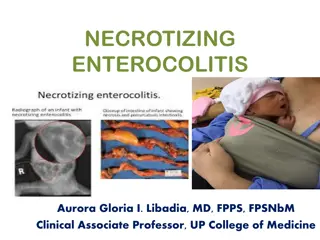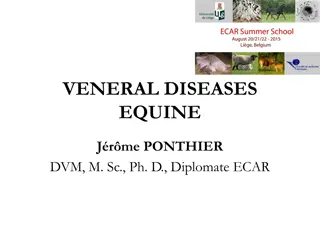Hyperthyroidism: Causes, Diagnosis, and Treatment Options
Hyperthyroidism, also known as thyrotoxicosis, is characterized by excessive release of T3 and T4 hormones. Learn about the causes of goiter, likely diagnosis in patients, treatment options including radio-iodine therapy and surgery, and pre/post-operative management for thyroidectomy. Explore a clinical case and lab investigations associated with hyperthyroidism.
Download Presentation

Please find below an Image/Link to download the presentation.
The content on the website is provided AS IS for your information and personal use only. It may not be sold, licensed, or shared on other websites without obtaining consent from the author.If you encounter any issues during the download, it is possible that the publisher has removed the file from their server.
You are allowed to download the files provided on this website for personal or commercial use, subject to the condition that they are used lawfully. All files are the property of their respective owners.
The content on the website is provided AS IS for your information and personal use only. It may not be sold, licensed, or shared on other websites without obtaining consent from the author.
E N D
Presentation Transcript
Hyperthyroidism Done by : Assistant lecturer Lubab Tarek
Definition Synonymous thyrotoxicosis . The body produces antibodies that are structurally similar to the binding site of TSH, causing excessive release of T3 and T4 by the thyroid. with overactive thyroid and
Clinical case: History: A 45-year-old woman is referred to the general surgical outpatients after her general practitioner (GP) noticed a swelling in the neck. On questioning, the patient reports losing about a stone in weight over the preceding 3 months, despite having an increased appetite. She also complains that she always feels hot and has to sleep on top of the bed covers at night. Her bowel motions have been loose. Examination: The patient is thin, irritable and has a noticeable fine resting tremor. Her peripheries feel warm and she has a resting heart rate of 110/min, with a blood pressure of 150/90mmHg. On examination of the neck, there is a smooth moderate enlargement of the thyroid swallowing. There is protrusion of the eyes with lid retraction. Her visual acuity and eye movements are normal. There is no associated lymphadenopathy. The heart sounds are normal and the chest is clear. gland, which moves on
Questions: 1. What are the causes of a goiter? 2. What is the likely diagnosis in this patient? 3. What are the options for treatment? 4. Rationalize the pre and post-operative management options for thyroidectomy patients? Answers: 1. Causes of goiter: Diffuse: Physiological: puberty/pregnancy Autoimmune: Graves disease/Hashimoto s thyroiditis Inflammatory: De Quervain s(acute) thyroiditis/Riedel s (chronic) thyroiditis Iodine deficiency: colloid/simple Goitrogens: carbimazole/propylthiouracil Lymphoma Multinodular/solitary nodule: Multinodular goitre Cysts Tumors: adenomas/carcinoma Miscellaneous: sarcoidosis/tuberculosis
Continue. 2. This patient has hyperthyroidism secondary to Graves disease. 3. Many patients are now treated with: radio-iodine therapy. Antithyroid medication, carbimazole or propylthiouracil, are used to establish control of hyperthyroidism and act by inhibiting thyroid hormone production. Beta-blockers may also be used initially to control symptoms. Surgery is indicated in patients with a large goitre, in patients with recurring disease and in patients unable to have radio-iodine therapy (patients planning pregnancy).
4.Management patients pre-operatively on thyroidectomy: If a patient is scheduled for a bilateral thyroid procedure, initiating preoperative testing for baseline serum calcium, parathyroid hormone, and 25-hydroxy vitamin D blood levels is advised. If the patient s serum calcium is low normal, prescribing oral calcium supplementation is advised; if the serum calcium level is elevated, PTH should be measured to look for occult primary hyperparathyroidism. For preoperative vitamin D deficiency treatment, a regimen of 50,000 IUs of vitamin D3 weekly or 6,000 IUs daily for 8 weeks is recommended. If found, a vitamin D deficiency would be easily corrected in the period leading to the surgery date. "It might take three to four weeks for thyroid surgery to be scheduled. At least you would have a head start to get the patient on high dose supplementation of vitamin D." Communicating between providers is also important, especially if the hypoPT becomes prolonged (permanent).
4.Management patients Post-operatively Parathyroid Hormone. The recommendation to assess PTH levels in the immediate postop period, as the numbers may be useful to predict which patients are most likely to develop hypocalcemia and thereby inform follow-up and need for further management. If PTH at or above 15 ug/mL in adults at 20 minutes or longer after thyroidectomy would negate the need for intensive blood calcium monitoring or supplementation; a PTH level below 15 ug/mL would suggest an increased risk for acute hypoPT that might prompt preemptive prescribing of oral calcium and calcitriol and/or a serum calcium measurement until stability is achieved. management of hypoparathyroidism contains a
Continue.. For comprehensive review of post-operative management of hypoparathyroidism is available in Table 1. patients undergoing thyroid surgery, a
